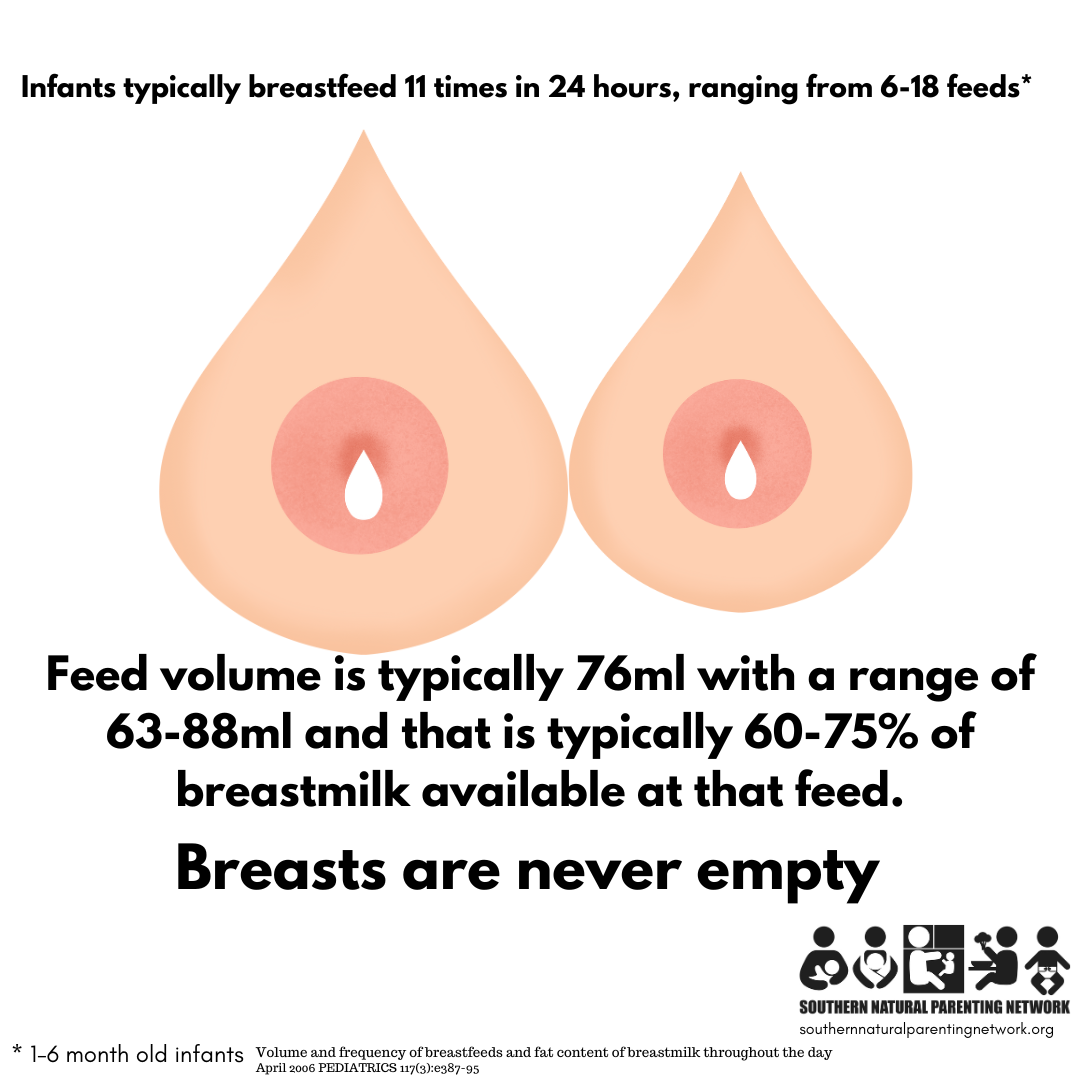How much milk do breastfed babies need?
In a world filled with data, many new parents struggle with the concept of not knowing how much milk their fully breastfed baby is taking at feeds. Is it enough? How can you know it is enough? What if they are crying because I don't have enough? And - possibly the most common - if I want to feed my baby expressed breastmilk, how much is enough?
When a healthy, full-term baby is allowed to breastfeed whenever they want to go to the breast, for as long as they choose to stay on the breast, they will take "enough". The volume and consistency of the milk will vary every feed, depending on factors you don't need to think about.
A breastfeed is as long as a piece of string! Which feed? What time of day? Whose baby? What stage baby?
Breastmilk Is always available in the breast, refilling constantly even during a feed. The baby never empties the breast and they always leave milk in the breast after they finish. It is not physically possible for a lactating breast to be empty. You never need to wait for it to fill up.
The more frequently a baby breastfeeds, the higher the fat content is. The volume of milk changes throughout the day as do the levels of calorie-dense fat. As long as you don't restrict breastfeeds or follow strict routines, your baby will regulate your milk supply to meet their requirements.
When a baby wants more milk, they go back to the breast. How long between feeds is another piece of string! During periods of rapid development, a baby will increase feed length and frequency.
But what is the volume of milk if you need to express? Well, research into this came up with surprising answers: every breast and every baby is unique!
Western Australian researchers decided to study what was going on inside the baby and the breast.
Mothers of infants who were 1 to 6 months of age and exclusively breastfeeding on demand test-weighed their infants before and after every breastfeed from each breast for 24 to 26 hours and collected small milk samples from each breast each time the infant was weighed. The researchers crunched the numbers:
Infants typically breastfed 11 times in 24 hours, ranging from 6-18 feeds
Feed volume was typically 76mls with a range of 63-88 and that was typically 60-75% of breastmilk available at that feed
Left and right breasts rarely produced the same volume of milk. The volume of milk consumed by the infant at each breastfeeding depended on whether the breast that was being suckled was the more or less productive breast, whether the breastfeeding was unpaired, or whether it was the first or second breast of paired breastfeedings; the time of day; and whether the infant breastfed during the night or not.
Night breastfeeding was common and made an important contribution to the total milk intake.
The fat content of the milk was around 40%, ranging between 33% and 50% - this was independent of breastfeeding frequency.
There was no relationship between the number of breastfeeds per day and the 24-hour milk production of the mothers.
There is no need to worry about how much milk your baby is taking. They will take exactly enough as long as they are fed when they show feeding cues, remain on the first breast until they indicate completion and are offered the second breast. They will regulate how often, how long and how many breasts they access around the clock. All you need to do is feed them responsively, regardless of the clock.
The most common cause of low milk supply is restricted breastfeeding.
Formula fed babies are fed less frequently than breastfed babies who follow a natural pattern. This is mostly because hospitals 100 years ago had to schedule feeding many babies and it was decided four-hourly feeds suited their routine best. Not necessarily the babies though! Six feeds spaced four hours apart means babies have to take larger volumes each feed. But breastfed babies have the flexibility to tailor each feed to their needs. Over a 24 hour period, babies range between 750–800 mL - but some babies may only need about 500 mL and others will need 1000mL or more! That’s because we all have different needs, right from birth! Your baby knows exactly how often they need to feed to maximise their milk intake.


